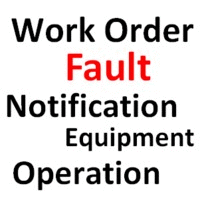Let me provide an example of KinCare's services:
- Nursing care
- Personal care
- Domestic assistance
- Social support
- Respite care
- Transportation
- Case management
Some of their clients need all of these services. These services are often provided by different people at different times. Let's image tens of thousands of clients, care givers and service providers located all across Australia. All of these participants and their appointments must be scheduled and coordinated. Does that sound like a big enough challenge for you Mate?
The only way to run this kind of operation efficiently is to make sure the care givers and service providers are connected (via mobile devices) to an intelligent software system (using artificial intelligence and context aware systems) to understand how to most efficiently provide and schedule hundreds of thousands of services. In addition, must also make sure each care and service provider is qualified, available and in close proximity. Also it is important to note that these services are critical to a persons health and welfare.
The mobile devices are used as mobile data collection devices, sensors (GPS) and reporting systems in the service delivery process. Mobile devices feed real-time data to the real-time analytics and artificial intelligence systems that schedule all parties across the country. Since all of these participants are mobile, it takes very careful and fast analytics to ensure all parties can meet in the right places, deliver and receive services efficiently, document services and invoice for those services.
Smartphones and tablets, broadband internet connectivity and ultra-fast artificial intelligence capabilities integrated with human resource, talent management, scheduling, case management, patient and service management, billing and dispatch systems are all required to make this work. Wow! Speed and artificial intelligence systems are revolutionizing these kinds of operations today.
When I am out teaching mobile and SMAC strategies to large companies the topics of speed, context aware and artificial intelligence comes up every time. These are the game changers today.
*************************************************************
Kevin Benedict,
Head Analyst for Social, Mobile, Analytics and Cloud (SMAC)
Cognizant
View Linkedin Profile
Learn about mobile strategies at MobileEnterpriseStrategies.com
Follow me on Twitter @krbenedict
Join the Linkedin Group Strategic Enterprise Mobility
***Full Disclosure: These are my personal opinions. No company is silly enough to claim them. I am a mobility and SMAC analyst, consultant and writer. I work with and have worked with many of the companies mentioned in my articles.
















